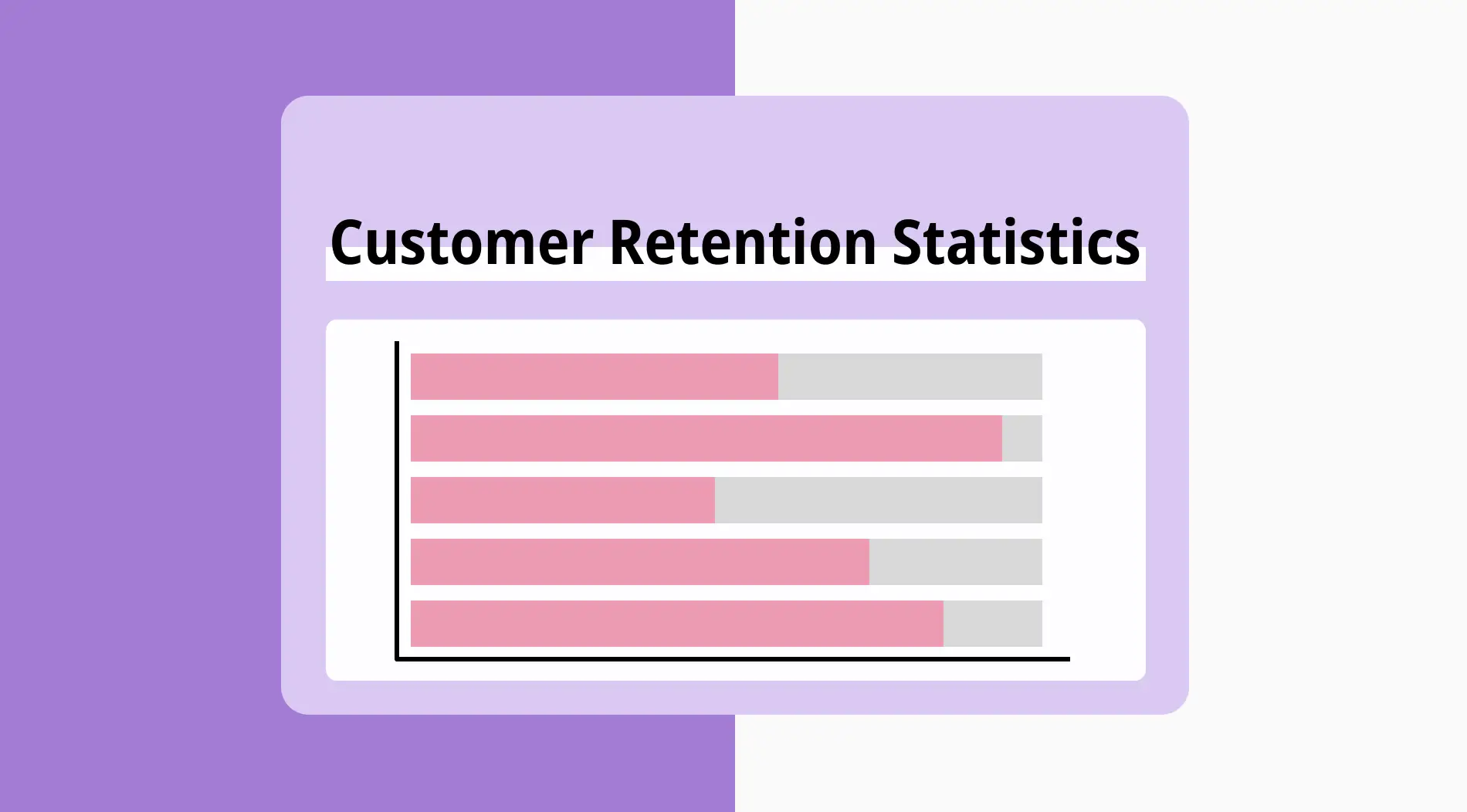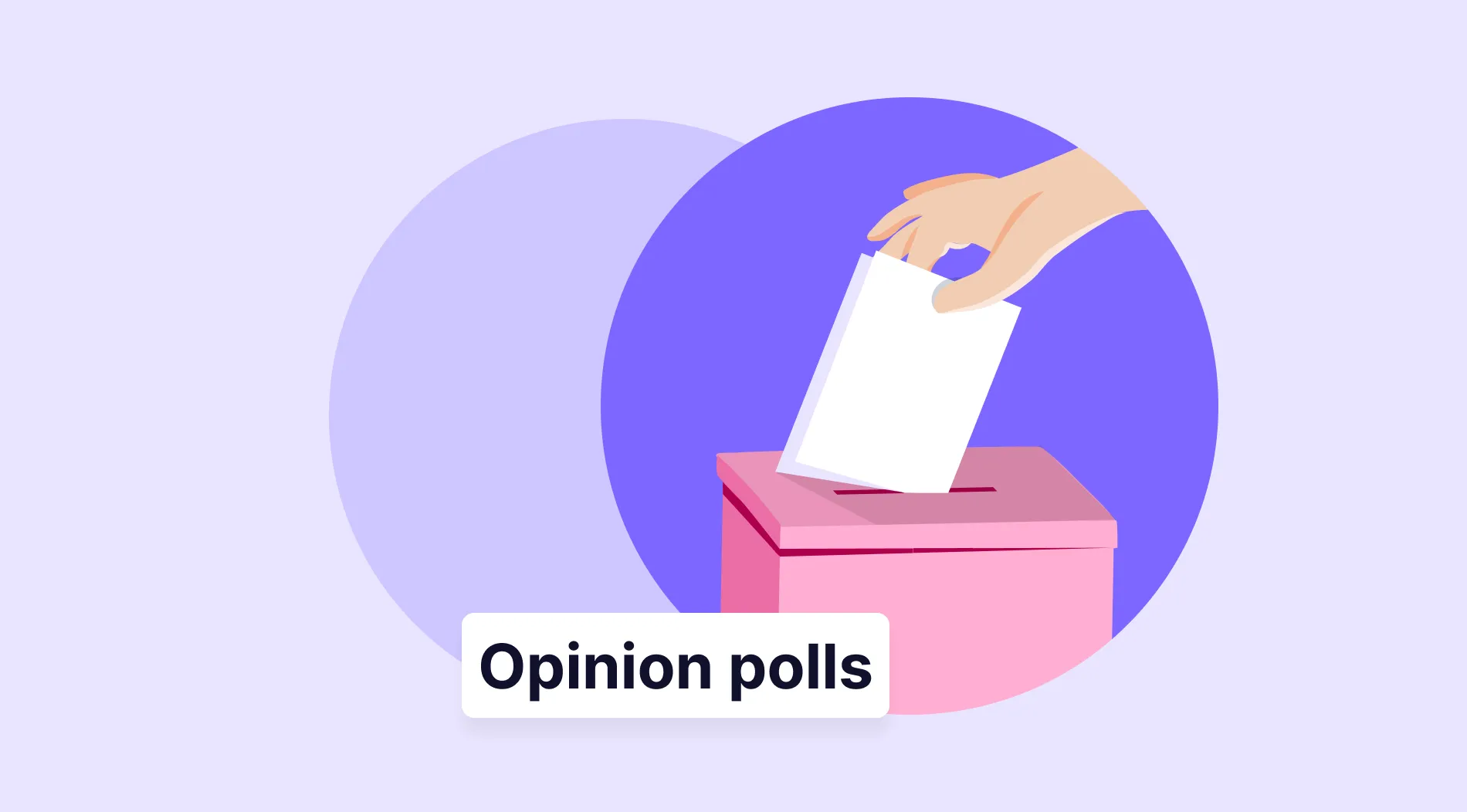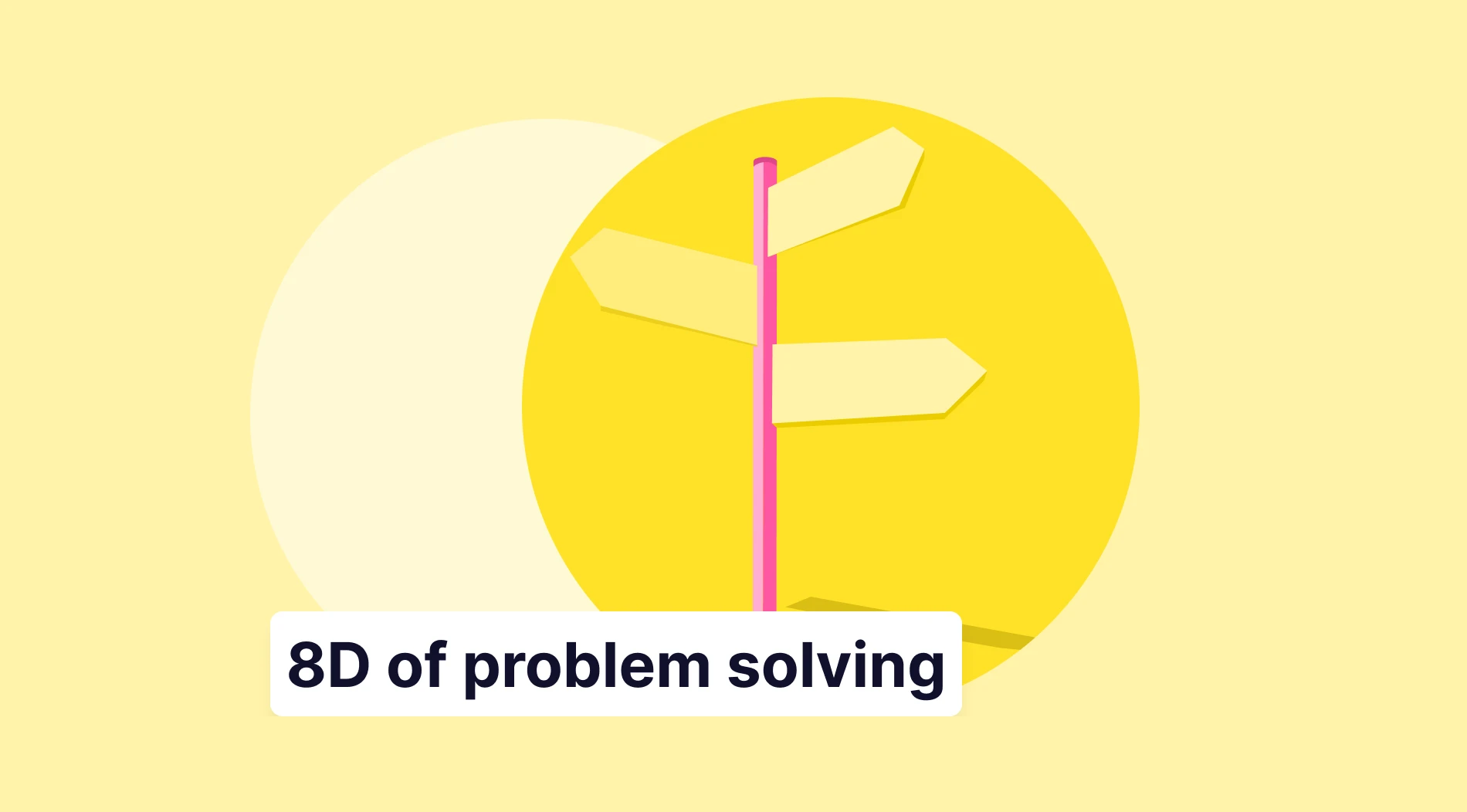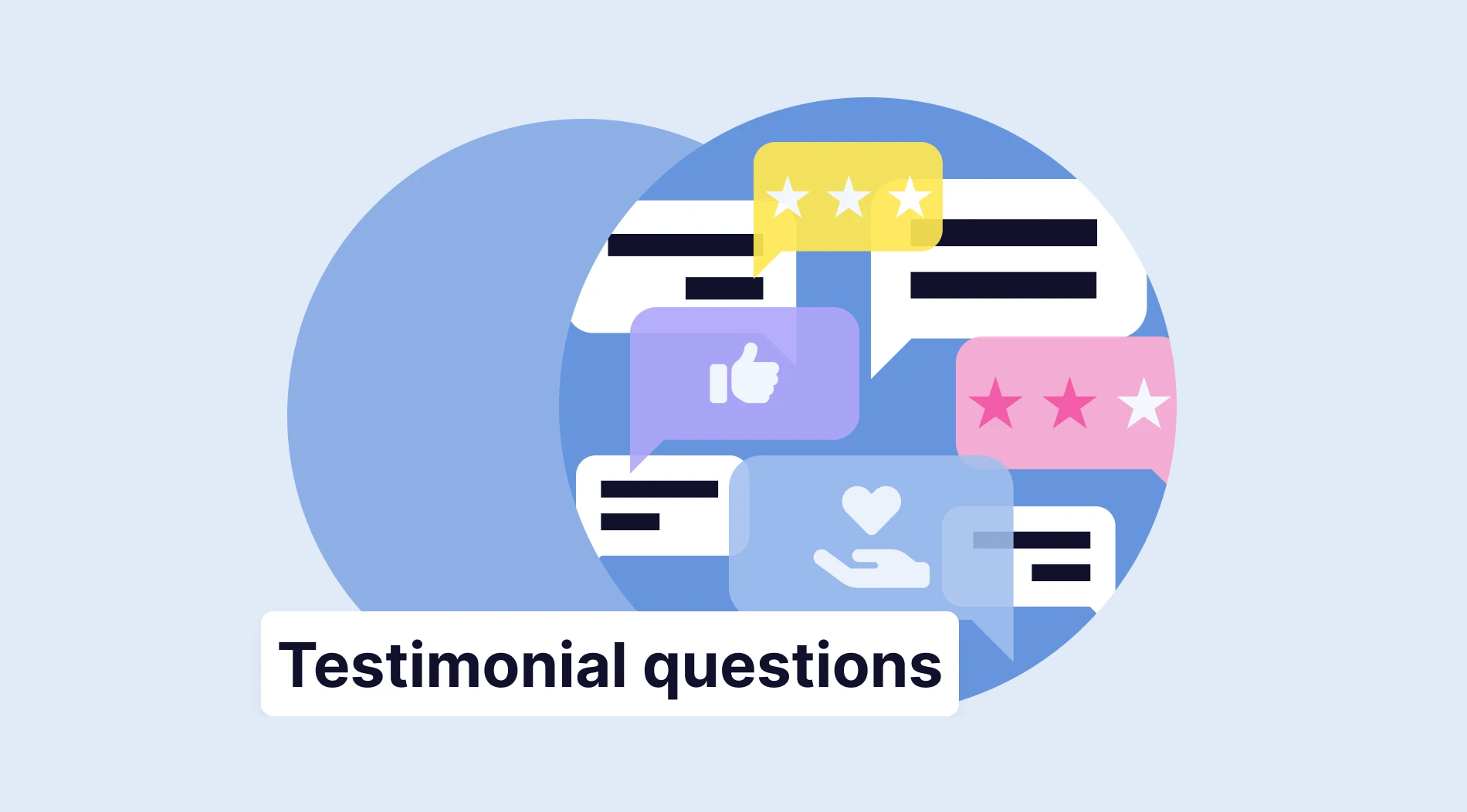It is essential for companies to retain their customers. The ability of companies to direct their customers who have previously benefited from their products and services to shop again allows them to make a significant profit. This is because customers with high brand loyalty are more likely to shop again.
Keeping customer retention rates high is essential for the long-term success and sustainability of companies. In this article, we have compiled 60+ customer retention statistics for you. Through this article, you will learn about customer retention, its definition, and its importance for companies. Now let's move on to our article, which will inform you about the subject!
What is customer retention?
Customer retention refers to the practice of maintaining relationships with existing customers and ensuring brand loyalty.
You can increase your customer retention rates by increasing customer satisfaction and improving customer experiences. Retaining your existing customers costs much less than gaining new ones. Therefore, finding ways to increase customer retention is key to your company's success.
60+ Essential customer retention statistics for your business
Measuring customer retention and determining the strategies to increase rates will put you ahead of your competitors. The 60+ customer retention statistics we have prepared will help you learn the benefits of customer retention. Now, check out our statistics for more detailed information:
General statistics about customer retention
Analyzing customer behavior and producing solutions according to their needs increases retention rates. General statistics about customer retention will give you an insight into the subject before going into detail. Now, read the general statistics about customer retention and get informed.
1. Retaining an existing customer can be five times cheaper for companies than acquiring a new one (Onbound Engine).
2. Promotions delivered to new customers often have a conversion rate of less than 1% (Signal Mind).
3. Over 89% of businesses believe that a positive customer experience is essential for customer relationships and retention (Invesp).
4. 82.5% of consumers who feel that a brand recognizes them are willing to buy from that brand again (Yotpo).
5. On average, a new corporate customer onboarding procedure can take up to 100 days (McKinsey & Company).
6. 95% of customers feel that customer service influences their brand loyalty (Nice).
7. According to 59% of customers in the United States, a brand earns a customer's lifetime loyalty once they become loyal to it (Acquia).
8. If the shopping procedure is complicated, 74% of consumers are likely to switch brands (SurveySparrow).
9. 44% of companies do not calculate their retention rate (Customer Gauge).
10. With 62% of returning customers, fast-moving consumer goods (FMCG) had the greatest customer retention rate among the major e-commerce categories in France during the first quarter of 2023 (Statista).
11. There is a 60–70% chance of making a sale to an existing customer (Signal Mind).
12. A 5% increase in customer retention rate increases profit by more than 25% (Bain & Company).
13. According to 63% of executives, their company's budget for the loyalty program went up in the most recent planning cycle (PwC).
14. An average business experiences a 10–30% defection rate annually (Super Office).
15. More than half of the participants (60%) think maintaining and encouraging customers requires excellent customer service (Exploding Topics).
16. A significant percentage of customers (83%) regarded providing excellent customer service as an important factor in brand loyalty (Statista).
17. Loyal customers are 5x more likely to repurchase and forgive, 4x more inclined to recommend, and 7x more willing to try a new product (SaaSquatch).
18. After two or three years, 92% of consumers would totally stop doing business with a company (G2).
19. 84% of respondents think that prospects can make better purchasing decisions by learning from customers at the start (Forrester).
20. In order to show their loyalty to the companies they love, 65.6% of respondents worldwide stated they usually purchase from the same brand (Yotpo).
21. Compared to new customers, repeat customers are 31% more inclined to spend and are 50% more likely to try new products or services (Invesp).
22. After two negative digital interactions, 41% of customers will abandon a brand (Nice).
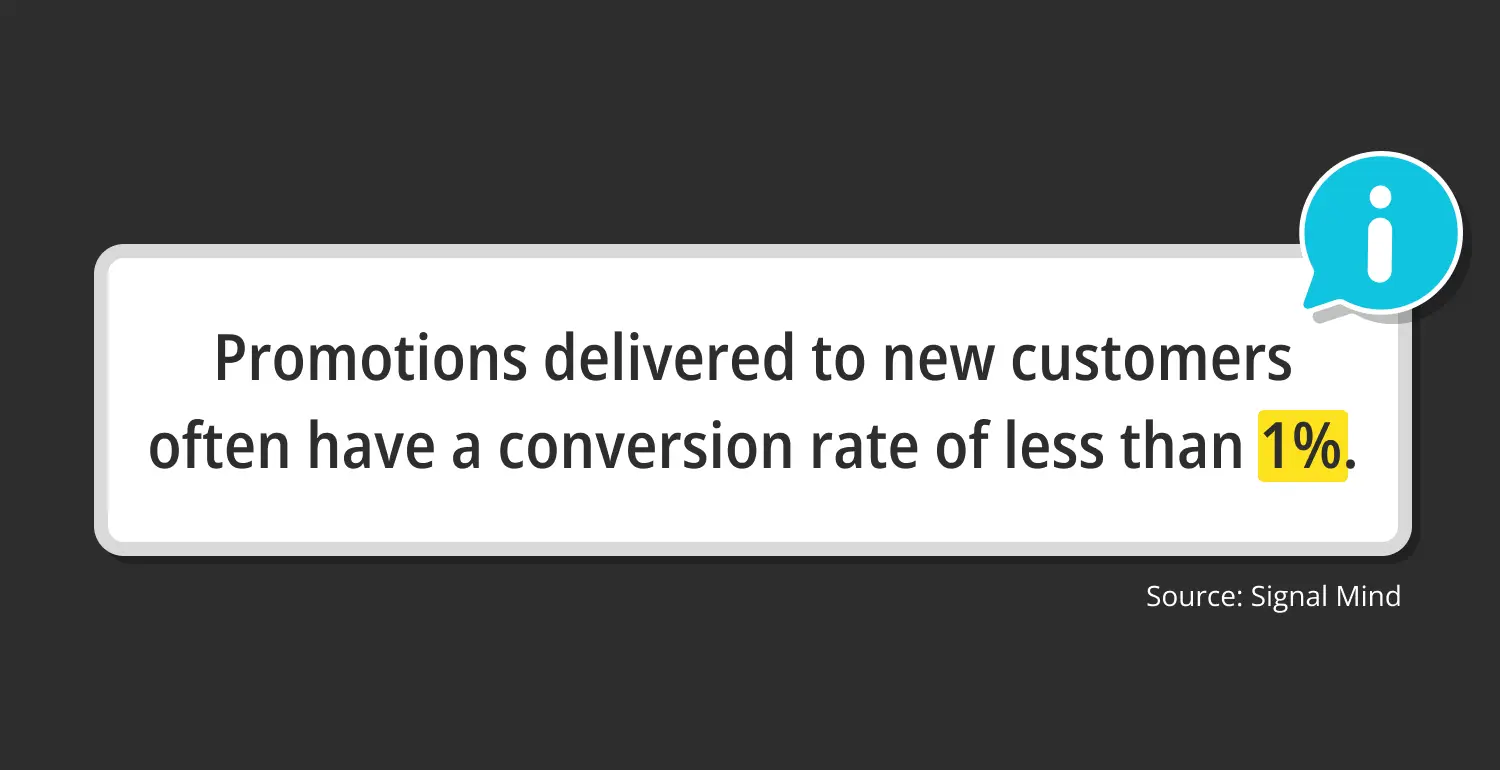
Source: Signal Mind
B2B customer retention statistics
In B2B marketing, long-term relationships with your customers will be more profitable for your business. For this reason, you should ensure customer loyalty and increase your customer retention rates. Here are insightful B2B customer retention statistics for you to make comparisons:
23. In their third year of purchasing from a company, 67% of returning consumers spend more money than they did in their first six months (Martech Zone).
24. While only 18% of companies prioritize customer retention, 44% of businesses give greater importance to acquiring new customers (Invesp).
25. The annual loss incurred by US corporations from avoidable B2B customer switching is 136.8 billion dollars (G2).
26. According to 82% of enterprise organizations, their client onboarding strategy is a critical value driver (Precursive).
27. According to 52% of users, a negative mobile experience decreased their likelihood of interacting with a business (Think With Google).
28. 91% of consumers who had a negative experience said they wouldn't do business with the same company again (SurveySparrow).
29. 89% of marketers agree that email is the best strategy for customer retention and customer engagement (Statista).
30. In the previous year, 26% of customers stopped buying from a company (PwC).
31. More than half of the respondents stated that a loyalty program would motivate them to keep purchasing from a company (Yotpo).
32. On average, businesses lose half of their customers every five years (Super Office).
33. According to 76% of business owners, Customer Lifetime Value (CLV) is a vital concept for their company (Huify).
34. 20% of small business owners invest most of their time and effort in increasing the number of new customers (Bia Advisory Services).
35. It is predicted that the customer loyalty management market will surpass 24 billion dollars by the end of 2029, growing at a CAGR of 23.5% (Statista).
36. Businesses that prioritize improving customer retention over acquiring new ones earn 60% more in revenue (G2).
37. Only 40 percent of companies and 30 percent of agencies are equally focused on retaining customers and acquiring new ones (Invesp).
38. B2B customer retention rates typically range from 76% to 81% (Forrester).
39. In comparison to five years ago, both B2B and B2C customer acquisition costs (CAC) have increased by approximately 60%, despite the B2B CAC being slightly higher (Paddle).
40. 91% of executives believe that their loyalty program should offer more rewards or advantages (Pwc).
💡 If you are curious about customer service statistics, check out our article for further insights!
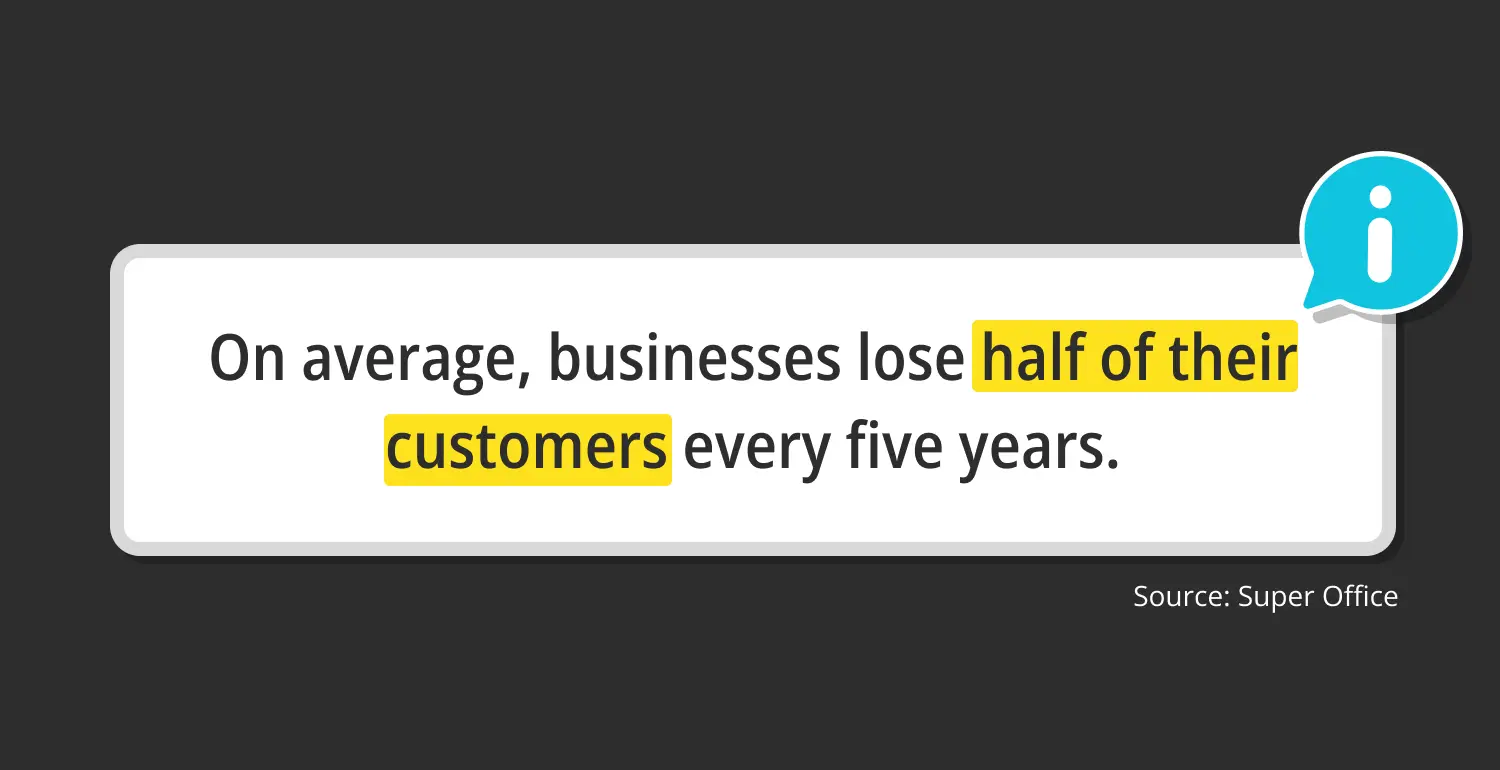
Source: Super Office
Customer retention statistics by sectors
Your loyal customers will increase sales by recommending your brand to their family and friends. Bank customer retention statistics and insurance customer retention statistics will allow you to make inferences about different sectors. By analyzing the statistics of various sectors, you can compare and determine strategies. Here are customer retention statistics by sector:
41. Across all industries, the average 1-day mobile app retention rate is 25.3% (G2).
42. Travel, hospitality, and restaurant customer retention rate is 55%. These industries have the lowest customer retention rates of any industry (Statista).
43. The insurance industry has an average retention rate of 84% (The Independent Insurance Agents of Dallas).
44. Companies with a net retention rate below 60% expand at a rate of only 13.1% annually in any sector (ChartMogul).
45. The average customer retention rate across different sectors is roughly 72.5% (Customer Gauge).
46. The customer retention rate in the retail industry is 63% (SurveySparrow).
47. Over 35% of the customer retention rate is considered elite in the SaaS and e-commerce industries (Mixpanel).
48. The media and professional services sectors have the highest customer retention rates, at 84% (Statista).
49. For an insurance company, acquiring new customers is seven to nine times more expensive than retaining one (The Independent Insurance Agents of Dallas).
50. The customer retention rate of the fashion industry is 54%, and that of the home appliances industry is 51% (Statista).
51. Just 14% of small business owners use the majority of their annual marketing budgets on customer acquisition (Bia Advisory Services).
52. In the IT sector, the average customer churn rate is 12% (Customer Gauge).
53. The total number of customers emotionally connected to brands have 306% better lifetime value than satisfied customers (PR Newswire).
54. In the e-commerce sector, the average customer retention rate is approximately 38% (Sprinklr).
55. 58% of marketers utilize mobile messaging, 22% use online retargeting, 52% use email, and 39% use notifications on mobile and web platforms for customer retention (G2).
56. SaaS companies with a net retention rate of over 100% typically see annual growth of 43.6% (ChartMogul).
57. 74% of survey participants say that they are more likely to revisit a mobile-friendly website and mobile app in the future after their first encounter (Think With Google).
58. The average customer retention rate in the healthcare industry is 77% (Vena Solutions).
59. The average customer retention rate in the banking industry is 75% (Blogging Wizard).
60. For subscription-based services, customer retention rates typically range from 40% to 45% (Sprinklr).
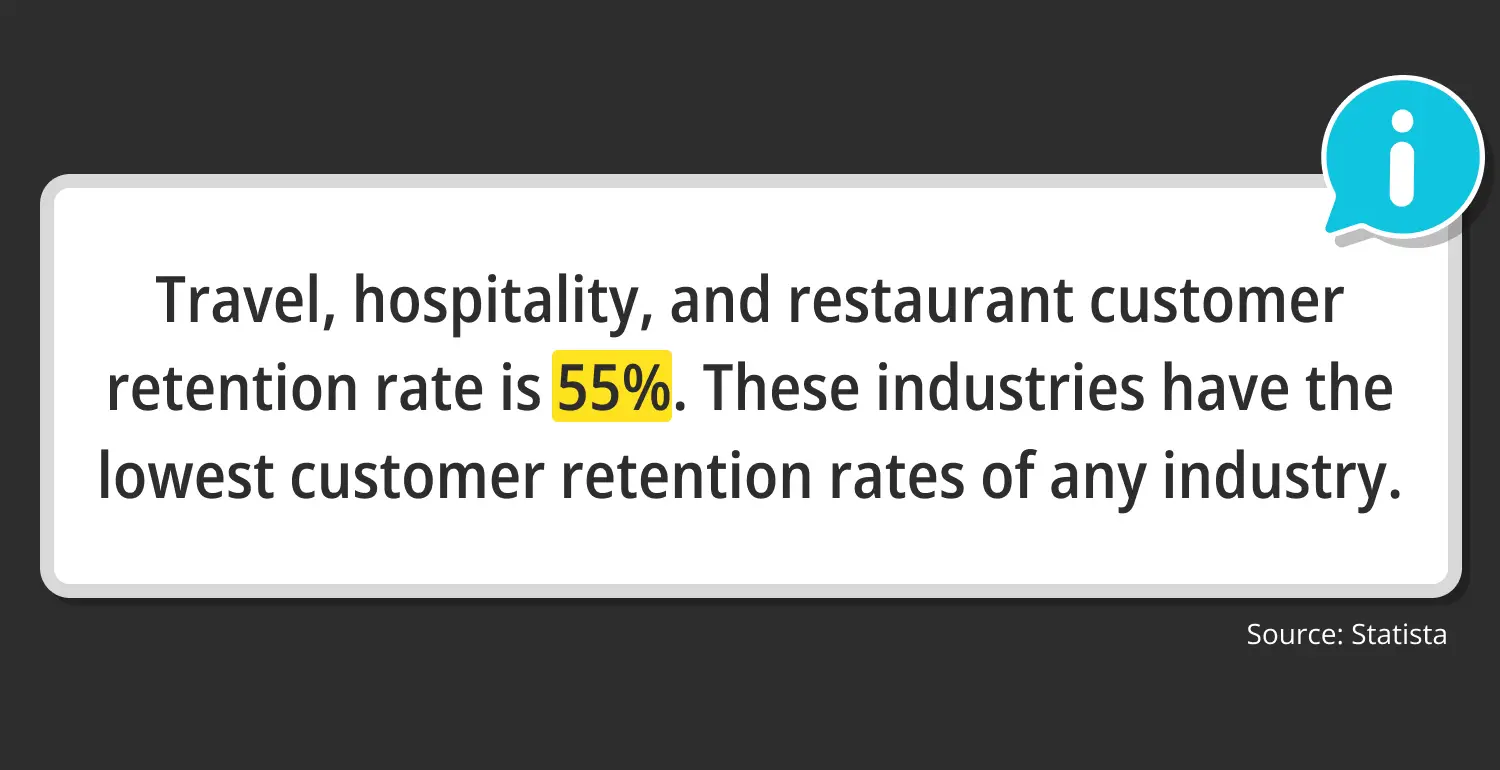
Source: Statista
DOs and DON'Ts
Retaining your existing customers saves you from the costs of new customer acquisition efforts. In this way, you can use your marketing budget more effectively and save money. However, retaining your customers and ensuring customer loyalty is not easy. Here are a few tips to help you in this regard:
DOs
👍Ensure customer satisfaction: Providing solutions to your customers' wants and needs and satisfying them will increase their loyalty to your brand. Therefore, you should prioritize customer satisfaction to increase customer retention rates.
👍Provide effective customer service: Providing effective customer service to your customers and communicating with them correctly will increase customer satisfaction. Thus, you will be able to strengthen brand loyalty by positively influencing your customers' purchasing decisions.
👍Create customer loyalty programs: Customer loyalty programs can encourage your customers to buy from your brand again. Through these programs, you can reward your customers with points and gifts in return for a certain amount of purchases and increase their loyalty.
👍Give importance to feedback: Listening to your customers' feedback and making adjustments based on this feedback will increase customer loyalty. In addition, communicating regularly with your customers will also increase your retention rates.
DON'Ts
👎Failure to provide personalized services: Avoiding providing personalized services to your customers will reduce your customer retention rates. The bottom line is that customers tend to prefer brands that offer personalized services.
👎Responding slowly to customers: Customers who do not receive a quick response to their suggestions and questions tend to prefer different brands. For this reason, it is important to provide fast feedback to your customers.
👎Ignoring customers’ problems: Customers whose problems are ignored will not prefer your brand again for shopping. For this reason, you should find fast and effective solutions to your customers' problems to increase customer retention rates.
👎Failure to ensure data privacy: Ensuring your customers' data security is both a legal obligation and the most important step in ensuring customer satisfaction. For this reason, you should pay attention to data privacy in order to achieve customer loyalty.
Wrapping it up
Long-term relationships with your customers will strengthen your brand image and make your potential customers prefer your brand. Thanks to the 60+ customer retention statistics we have prepared for you, you will learn what you need to do to ensure customer loyalty. By increasing your customer retention rates, you will gain a competitive advantage and get ahead of your competitors.
Now that you have learned how to increase customer retention rates, you are ready to increase your sales!
Fatih is a content writer at forms.app. He is also a translator and interpreter. Fatih loves reading and writing. He is passionate about exercising and traveling. His specialties are surveys, statistics, and translation.
